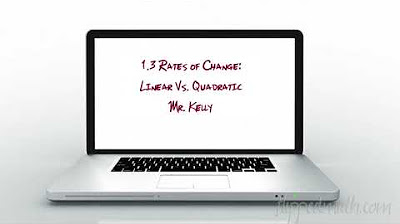CARA MUDAH BEDAIN THEY, THEY’RE, THEIR, DAN THERE - Kampung Inggris LC | Teatu
Summary
TLDRIn this tutorial, Mr. Ferry explains the differences between the commonly confused English words 'they,' 'there,' and 'their.' He breaks down each word's function: 'they' as a subject pronoun, 'their' as a possessive pronoun showing ownership, and 'there' to indicate existence or place. With clear examples, Mr. Ferry makes these distinctions easy to understand, offering a quick quiz to reinforce the concepts. By the end of the video, learners will have a solid grasp of when and how to use these words correctly in English sentences.
Takeaways
- 😀 The words 'they', 'there', and 'their' often confuse English learners, but understanding their functions can help clear up the confusion.
- 😀 'They' is a subject pronoun, indicating the actor or doer of an action, and it must be used at the beginning of a sentence.
- 😀 The word 'there' can indicate possession, meaning ownership, and must be followed by a noun (e.g., 'their house').
- 😀 Possessive pronouns such as 'my', 'your', 'their', and 'our' show ownership and must always be followed by a noun.
- 😀 'There' can also be an abbreviation for 'they are', like in 'They're going to the park'.
- 😀 'There' can show existence (e.g., 'There is a cat in the room') or location (e.g., 'He is standing there').
- 😀 The word 'there' used for existence should be followed by 'is' for singular nouns and 'are' for plural nouns.
- 😀 To indicate a location, 'there' must be placed at the end of the sentence (e.g., 'He is standing there').
- 😀 English learners must memorize possessive pronouns like 'my', 'your', 'their', 'his', 'her', and 'its' to effectively use them in sentences.
- 😀 The script encourages learners to actively participate in the lesson and try exercises to improve their understanding of these common words.
Q & A
What is the main difference between 'they' and 'there' as explained in the video?
-'They' is used as a subject pronoun to refer to a group of people or things performing an action. 'There', on the other hand, can indicate possession, existence, or location.
How is the word 'they' used in a sentence?
-'They' is used as a subject pronoun in a sentence, and it comes before the verb. For example, 'They don't know my mother.'
What does the word 'there' represent when it shows possession?
-When 'there' shows possession, it indicates ownership. For example, 'This is their marker' or 'I will visit their house.'
What is the rule for writing possessive words like 'my', 'your', 'their' in English?
-Possessive words like 'my', 'your', and 'their' must be followed by a noun to complete the expression. For example, 'their house' or 'my book'.
What is the significance of the apostrophe in the abbreviation 'they're'?
-The apostrophe in 'they're' is used as an abbreviation for 'they are'. For example, 'They're going to the park' is short for 'They are going to the park'.
When does 'there' indicate existence?
-'There' indicates existence when used in sentences like 'There is a cat in my room,' meaning something exists or is present in a particular place.
What is the difference between using 'there is' and 'there are'?
-'There is' is used for singular objects, while 'there are' is used for plural objects. For example, 'There is a book' and 'There are two books'.
How is 'there' used when indicating a location?
-'There' is used at the end of a sentence when indicating a location. For example, 'He is standing there' or 'He is sitting there.'
Why is it important to memorize possessive pronouns like 'my', 'your', 'their', etc.?
-Memorizing possessive pronouns is essential for forming correct English sentences and expressing ownership or relationships between objects and people.
How can one distinguish between the different uses of 'there' in English?
-The word 'there' can indicate existence (e.g., 'There is a cat'), possession (e.g., 'This is their marker'), or location (e.g., 'He is sitting there'). The context of the sentence helps determine its meaning.
Outlines

Dieser Bereich ist nur für Premium-Benutzer verfügbar. Bitte führen Sie ein Upgrade durch, um auf diesen Abschnitt zuzugreifen.
Upgrade durchführenMindmap

Dieser Bereich ist nur für Premium-Benutzer verfügbar. Bitte führen Sie ein Upgrade durch, um auf diesen Abschnitt zuzugreifen.
Upgrade durchführenKeywords

Dieser Bereich ist nur für Premium-Benutzer verfügbar. Bitte führen Sie ein Upgrade durch, um auf diesen Abschnitt zuzugreifen.
Upgrade durchführenHighlights

Dieser Bereich ist nur für Premium-Benutzer verfügbar. Bitte führen Sie ein Upgrade durch, um auf diesen Abschnitt zuzugreifen.
Upgrade durchführenTranscripts

Dieser Bereich ist nur für Premium-Benutzer verfügbar. Bitte führen Sie ein Upgrade durch, um auf diesen Abschnitt zuzugreifen.
Upgrade durchführenWeitere ähnliche Videos ansehen

Motion Characteristics of a Projectile

AP Precalculus – 1.3 Rates of Change Linear and Quadratic Functions

Create checkerboard pattern in Photoshop tutorial how to

How to Add, Subtract, Multiply, and Divide Decimals | A Review of Decimals | Math with Mr. J

(BOCORAN) SOAL TES MASUK SMP/MTs‼️PART 1

How to Find the Surface Area of a Rectangular Prism | Math with Mr. J
5.0 / 5 (0 votes)
